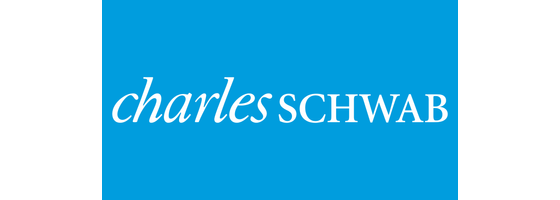- A hands-off approach to investing
- Low-cost investment option
- Automatic portfolio rebalancing
- Some robo-advisors offer automatic tax-loss harvesting
The 7 Best Robo-Advisors of November 2024

Our evaluations and opinions are not influenced by our advertising relationships, but we may earn a commission from our partners’ links. This content is created by TIME Stamped, under TIME’s direction and produced in accordance with TIME’s editorial guidelines and overseen by TIME’s editorial staff. Learn more about it.
When it comes to investing, we may be living in one of the best periods in history. Beyond the wealth of available knowledge, investing firms are lowering fees and competing for consumers. One way these firms aim to serve more customers is with robo-advisors, which allow you to take advantage of sophisticated portfolio-management algorithms with modest amounts of money to invest. If you’re ready to move beyond investment advice from Reddit or want a more customized portfolio, you may want to consider investing with a robo-advisor.
| Robo-advisor | Best for | Fees | Account minimum | Promotion | ||
|---|---|---|---|---|---|---|
Hybrid investing | From $3/month | $0 | One free month | |||
Tax efficiency | $19/month | $0 | 7-day free trial | |||
Investment options | 0% | $5,000 | N/A | |||
New investors | $4 for accounts under $20,000, then .25% | $0 | N/A | |||
Access to advisors | No advisory fees under $25,000; 0.35% a year for balances of $25,000+ | $0 | N/A | |||
SigFig | Account integration | $0 under $10,000, .25% after | $2,000 | N/A | ||
Wealthfront | Customizable investing | Vanguard Digital Advisor | Low fees | 0.15% | $3,000 | No advisory fees for 90 days |
Many investment firms offer robo-advising, but most of them fall short, offering limited fund options at a high cost. The following robo-advisors offer low fees, a wide range of investment options, comprehensive investment tools, access to professional financial planners, and smart recommendations.
Stash is an investing app that’s well-suited to new and intermediate investors. You can invest on your own or with Stash Smart Portfolio , the robo-advisor that automates your investments. Stash offers a unique debit card called the Stock-Back card, which can earn you up to 3% back in stock when you make purchases with the card. Pricing ranges from $3 to $9 monthly, with one month free as the current promotion.
Playbook’s main draw are its advanced tax-saving investment strategies, which are similar to what a financial advisor would offer. Fees are $19 monthly for the Essential program (assets under $29,000.) Playbook Plus is $59 for assets over $29,000 and offers more advanced tax-saving strategies. This fee is much higher than other competitors, but it could be worth it if Playbook’s tax advice saves you money.
Charles Schwab’s Intelligent Portfolios doesn’t charge a fee and comes with an array of investment and tax-loss harvesting options. One potential drawback is that Schwab portfolios tend to allocate higher percentages to cash than other funds, which could dilute investment returns. Charles Schwab requires a $5,000 minimum investment for its free robo-advisor service.
If you don’t mind paying extra for advice, you can opt for Intelligent Portfolios Premium. For a one-time $300 planning fee and a $30 monthly subscription, you’ll get 1:1 access to a Certified Financial Planner who will create a personalized action plan and review your portfolio.
Betterment is ideal for beginners because there is no account minimum to get started. Investors can build a diverse, sophisticated portfolio with Betterment’s options at a low cost. Betterment charges $4 monthly until the account balance reaches $20,000 or automatic monthly deposits exceed $250. Then the fee structure changes to .25% per year. Betterment also offers tax-saving tools and strong portfolio construction.
No advisory fees under $25,000; 0.35% a year for balances of $25,000+
Fidelity Go is one of the top robo-advisors because of its portfolio quality, services, and low fees. It’s great for beginners because there’s no fee until your account reaches $25,000. Above this threshold, you’ll begin paying a .35% advisory fee each year.
Over $25,000, you also receive unlimited access to Fidelity financial advisors. The main downside is there is no tax-loss harvesting advice at this time.
If you want to keep your money where it is, but still want professional, hands-off management, you may want to take a look at SigFig. The platform integrates with Schwab or Fidelity and has partnerships with UBS and Wells Fargo.
SigFig’s minimum investment amount is $2,000. There is no fee for portfolios under $10,000; it’s .25% for those over $10,000. SigFig also offers tax-minimization tools.
Vanguard’s robo-advisor is incredibly robust and charges one of the lowest fees on the market. Its funds have a proven track record, and Vanguard gives investors access to a comprehensive set of financial tools to help them with their personal finances, including tax-loss harvesting. The main downside is the $3,000 investment minimum, which may turn away many investing newcomers.
For the best robo-advisors, we evaluated fees, account minimums, access for all investors, quality of investment funds, and comprehensive financial tools. The best robo-advisors stood out for providing quality robo-advising investments, planning, and tax strategy at a fair cost. Analysis and ratings from Morningstar weighed heavily in our choices.
When you’re deciding which robo-advisor to go with, you can take the following steps to help understand which ones provide the most competitive benefits.
Go beyond the advice recommended by influencers on TV, YouTube, or Reddit, and seek out evaluations from independent research companies, such as Morningstar. It’s better to have non-biased research and data analysis on robo-advisors and the funds they’re invested in.
At first, it might seem overwhelming, but if you avoid websites with overly technical analysis, you can understand the research and insights offered by these companies.
When it comes to costs, you’re not just looking at how much you’re paying for the service, you’re also looking at the cost of funds. Here’s what it looks like:
Each robo-advisor gets to choose which funds they’re invested in. Some funds are better than others, especially when it comes to the fees charged for the fund. Funds with a higher fee leave you with less money to reinvest in your portfolio. Some companies choose to invest in their own funds, which may or may not benefit you.
Take a look at what else is offered by the provider. Can you link to other investment accounts? Are you offered a hybrid option that lets you direct some of your other investments? Do you have access to tax-planning resources, live advisors, or other financial tools?
If you’re not ready to let go of control over your investments, you can choose more traditional alternatives.
You can choose to invest on your own through a brokerage account. There are plenty of options for choosing your own funds, including online brokerages such as JP Morgan Chase, Robinhood, or Tradestation. You might also consider some outside-the-box options, such as Plynk or Public.
A financial advisor can customize a portfolio that meets your needs. They provide the human experience that can guide you through your decision-making process. They can also adjust or rebalance your portfolio as necessary.
Robo Advisors automatically manage investments for you. They’re inexpensive and effective, but they vary widely from one provider to another. Yet, for a fraction of the cost of a human financial advisor, you can have a custom investment portfolio designed to meet your goals.
Robo-advisors use proprietary algorithms and artificial intelligence to make recommendations, build portfolios, optimize tax benefits, and mitigate risk. They consider your age, years until retirement, risk tolerance, and investment experience, and can rebalance your portfolio according to market conditions and investor circumstances.
Most robo-advisors use straightforward index funds to invest, including exchange-traded funds (ETFs), which keep fees low.
The cost for a robo-advisor varies by the provider. Some offer it as a free addition to the investing platform, while others charge a percentage of around 15 to 50 basis points (.15% to .50% of managed assets per year.)
For example, Fidelity doesn’t charge for its robo-advisor services until assets reach $25,000, at which point they charge a .35% annual fee.
For most of the robo-advisors we’ve reviewed, the process for signing up is straightforward, with one caveat: You need to answer several money-related questions. Most providers use a risk-assessment tool to help determine how much risk you’re willing to take. They will also make recommendations for allocating the different types of investments in your portfolio.
In general, the process looks something like this:
Before you settle on a robo-advisor, consider the following pros and cons:
TIME Stamp: Robo-advisors are effective and cost-efficient
To be blunt, investors currently paying high fees on actively-traded mutual funds from a bank would save a lot of money by using a robo-advisor to invest. Robo-advisors offer diversified investment portfolios that are exceedingly cost-efficient. You can be completely hands-off and still build a portfolio geared to your investing objectives, as if you had a financial planner walking you through the process.
We’ve covered many of the best robo-advisor platforms in this article. It’s worth looking at what these companies offer to see if robo-investing could help you meet your financial goals.
Yes, just as with any investment, you can lose money when you invest with a robo-advisor.
Robo-advisors are great for beginners because they take the guesswork out of investing. You’ll answer questions about your risk tolerance and the provider can build a diversified portfolio from your answers.
A robo-advisor picks the investments for you. An online brokerage typically requires you to pick your own investments and execute trades.
The information presented here is created by TIME Stamped and overseen by TIME editorial staff. To learn more, see our About Us page.










